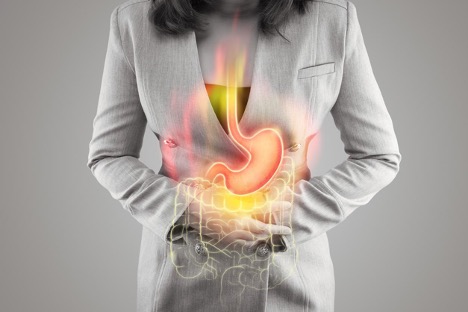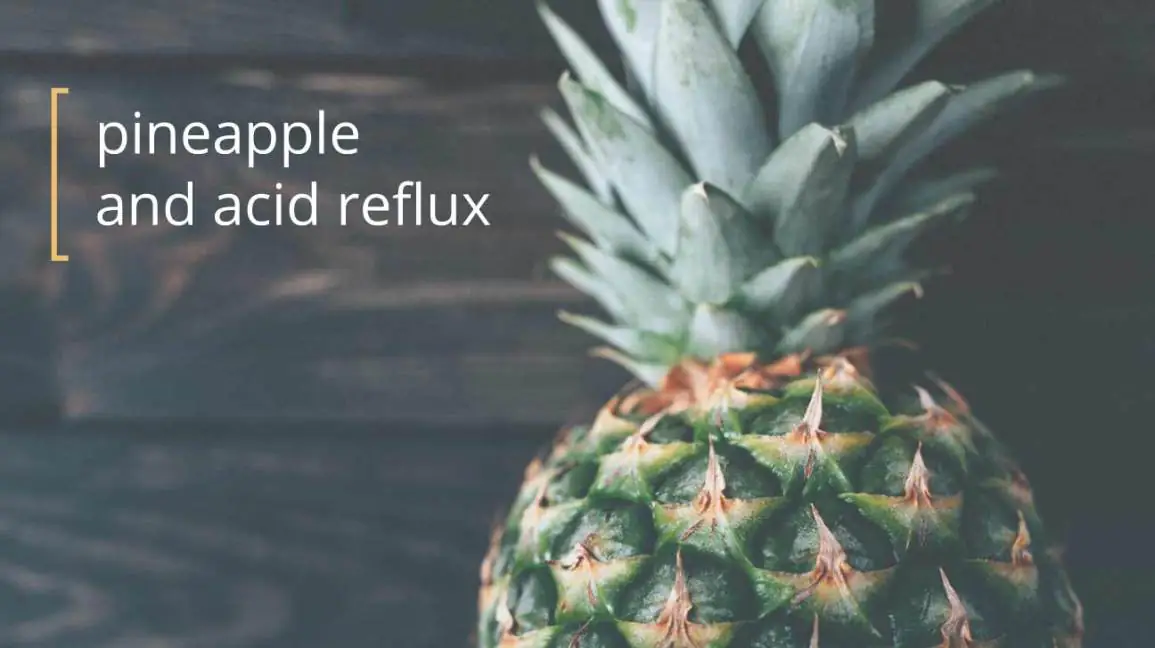Yes, you can eat pizza with acid reflux, but it is essential to make intelligent choices. Opt for a whole-wheat crust and consider a white pizza with an olive oil-based sauce instead of a tomato-based sauce.
Avoid high-fat and heavily spiced toppings like pepperoni, bacon, and sausages. Incorporate vegetables and choose lower-fat cheese options. Eating slowly and watching portion sizes can also reduce acid reflux symptoms.

Credit: drjanshim.com
Is Pizza Safe For Acid Reflux?
Overview Of The Relationship Between Pizza And Acid Reflux
When it comes to acid reflux, certain foods can aggravate symptoms. Pizza, combining ingredients like tomato sauce, cheese, and high-fat meats, is often considered a potential trigger for acid reflux. However, whether or not you can safely enjoy pizza with acid reflux depends on several factors.
Factors To Consider When Determining If Pizza Is Safe To Eat With Acid Reflux
1. Crust: Opting for a whole-wheat crust can be a better choice as it contains more fiber, which can help in digestion and prevent acid reflux symptoms.
2. Sauce: Traditional pizza sauces are often made with tomatoes, which are highly acidic and can aggravate acid reflux. Consider choosing a white pizza that features olive oil as the base instead of a tomato-based sauce.
3. Cheese is generally not recommended for individuals with acid reflux due to its high fat content. However, you may try low-fat versions or alternative cheeses like goat cheese or feta, which are typically better tolerated.
4. Toppings: Avoid high-fat and heavily spiced toppings like pepperoni, sausage, or bacon, as they can worsen acid reflux symptoms. Instead, opt for low-fat toppings like vegetables, chicken, or seafood.
5. Portion size: Be mindful of the portion size, as overeating can put additional pressure on the digestive system and trigger acid reflux symptoms. Consider pairing a smaller portion with a side of vegetables or a salad to balance the meal.
6. Eating habits: How you eat your pizza can also influence acid reflux symptoms. Eat slowly, chew thoroughly, and take small bites to allow for proper digestion and minimize the chances of triggering acid reflux.
Considering these factors and making intelligent choices, you can enjoy pizza without exacerbating your acid reflux symptoms. Remember to listen to your body and adjust based on your experience.
The Best Pizza Options For Acid Reflux
For many, pizza is a beloved food that brings comfort and satisfaction. However, if you suffer from acid reflux, enjoying a slice of your favorite pie can sometimes lead to discomfort and heartburn. The good news is that some pizza options are more acid reflux-friendly, allowing you to indulge without the adverse side effects. In this article, we’ll explore the best pizza options for acid reflux, including choosing a whole-wheat crust for added fiber and nutrients, opting for a white pizza with an olive-oil-based sauce instead of a red sauce, and exploring low-fat meat and cheese options such as turkey or chicken toppings and skim milk mozzarella. We’ll also discuss the importance of adding acid reflux-friendly toppings such as vegetables, herbs, and spices to enhance the flavor while minimizing the risk of triggering acid reflux symptoms.
Choosing A Whole-wheat Crust For Added Fiber And Nutrients
Regarding pizza crust, opting for a whole-wheat option is an intelligent choice for those with acid reflux. Whole-wheat crusts are not only delicious but also provide additional fiber and nutrients compared to traditional white crusts. The extra fiber helps promote healthy digestion and can help prevent or reduce symptoms of acid reflux. Additionally, whole-wheat crusts often have a more prosperous, nuttier flavor that can enhance the overall taste of your pizza. So, next time you order pizza, be sure to inquire about the availability of whole-wheat crusts.
Opting For A White Pizza With An Olive-oil Based Sauce Instead Of A Red Sauce
Traditional red tomato-based pizza sauces cause acid reflux symptoms due to their high acidity. Instead, consider trying a white pizza with an olive oil-based sauce. This alternative offers a lighter and less acidic option that can help reduce the risk of heartburn. The olive oil adds a pleasant flavor and provides healthy monounsaturated fats that are good for your heart and overall well-being. So, next time you’re craving pizza, consider giving a white pizza with an olive oil-based sauce a try.
Exploring Low-fat Meat And Cheese Options Such As Turkey Or Chicken Toppings And Skim Milk Mozzarella
Meat and cheese are classic pizza toppings that many of us love. However, when dealing with acid reflux, choosing low-fat options is essential to minimize the risk of heartburn. Opt for lean meats like turkey or chicken instead of high-fat options like pepperoni or sausage. Additionally, consider using skim milk mozzarella cheese instead of regular cheese. Skim milk mozzarella has a lower fat content, making it a healthier choice for those with acid reflux. By making these small changes, you can still enjoy the delicious flavors of meat and cheese without the adverse effects on your digestive system.
Adding Acid Reflux-friendly Toppings Such As Vegetables, Herbs, And Spices
In addition to choosing the correct crust, sauce, meat, and cheese, it’s essential to add acid reflux-friendly toppings to your pizza. Vegetables like bell peppers, spinach, and mushrooms contribute to your pizza’s nutritional value and provide natural flavors that complement the other ingredients. Adding herbs and spices like basil, oregano, and garlic can enhance the taste without adding extra acidity. Experimenting with different combinations of toppings can lead to unique and delicious acid-reflux-friendly pizzas that you can enjoy guilt-free.
Foods To Avoid On Pizza To Prevent Acid Reflux
High-fat Ingredients To Steer Clear Of, Such As Pepperoni, Bacon, And Fried Chicken
When it comes to enjoying pizza while dealing with acid reflux, it’s essential to be mindful of your chosen ingredients. High-fat toppings can be particularly troublesome, as they can relax the esophageal sphincter muscle and increase stomach acid production. To prevent reflux symptoms, avoiding high-fat ingredients like pepperoni, bacon, and fried chicken is best.
Triggering Ingredients Like Tomatoes, Onions, Garlic, And Spicy Sauces
Aside from high-fat toppings, specific triggering ingredients can exacerbate acid reflux symptoms. These include tomatoes, onions, garlic, and spicy sauces. These ingredients are all known to increase stomach acid production and can lead to heartburn and discomfort. Avoiding these toppings if you’re prone to acid reflux is wise.
The Impact Of Cheese And Dairy Products On Acid Reflux Symptoms
In addition to fatty and triggering toppings, the impact of cheese and dairy products on acid reflux symptoms should be noticed. Dairy foods can increase stomach acid production and relax the esophageal sphincter, making it easier for stomach acid to flow back into the esophagus. To prevent acid reflux symptoms, opting for small servings of low-fat versions or non-dairy milk products is best.
Healthy Alternatives To Traditional Pizza
When satisfying your pizza cravings while dealing with acid reflux, exploring healthier alternatives that won’t trigger your symptoms is essential. Traditional pizza crust’s high-fat content and acidic toppings can aggravate acid reflux and lead to discomfort. However, several options allow you to enjoy pizza without the adverse effects.
Exploring Pizza Alternatives Such As Cauliflower Crust, Gluten-free Crust, Or Veggie-based Pizzas
If you’re looking for a low-carb and gluten-free option, cauliflower crust is a fantastic alternative to traditional pizza crust. Made from grated cauliflower, eggs, and a combination of herbs and spices, cauliflower crust provides a crispy and flavorful base for your favorite toppings. This option is healthier and allows you to incorporate more vegetables into your diet.
A gluten-free pizza crust is an excellent alternative to gluten-containing foods. Made from a combination of gluten-free flour such as rice flour, almond flour, or tapioca flour, this crust option is delicious and safe for those with gluten intolerances.
For those looking to increase their vegetable intake, veggie-based pizzas are an excellent choice. Whether you opt for a zucchini crust or a Portobello mushroom base, these pizzas offer a creative and nutritious twist to the traditional recipe. Not only do they provide ample nutrients, but they also add a unique flavor profile.
Homemade Pizza Options For Better Control Over Ingredients And Cooking Methods
If you’re concerned about the ingredients and cooking methods used in store-bought pizzas, making your pizza at home gives you better control over what goes into your meal. You can customize your pizza to suit your dietary needs and preferences by using fresh, high-quality ingredients and opting for healthier toppings.
Start by choosing a healthier crust option, such as a cauliflower or gluten-free crust. Then, add a variety of nutrient-rich toppings, such as grilled vegetables, lean protein, and low-fat cheese. By being mindful of portion sizes and avoiding overly greasy or spicy toppings, you can create a delicious and reflux-friendly pizza in your kitchen.
Other Tasty And Nutritious Meals That Can Satisfy Pizza Cravings Without Aggravating Acid Reflux
If you want to satisfy your pizza cravings without aggravating your acid reflux, plenty of tasty and nutritious alternatives exist. Here are some options:
- Quinoa crust pizza: Quinoa is a high-protein grain that can be ground up and used as a crust alternative. It provides a nutty and slightly chewy texture, making it a fantastic base for your favorite pizza toppings.
- Cauliflower rice bowl: Instead of a traditional pizza, choose a cauliflower rice bowl with pizza-inspired ingredients such as marinara sauce, cheese, and vegetables. This option provides a similar flavor profile without the heavy dough.
- Vegetable stir-fry: If you’re craving pizza flavors but want to avoid the crust, a vegetable stir-fry can be a satisfying option. Load your stir-fry with tomato sauce, cheese, and pizza toppings for a flavorful and reflux-friendly meal.
- Gluten-free flatbread: Instead of a traditional pizza crust, use gluten-free flatbread as a base. Top it with your favorite toppings and bake until crispy. This option offers the convenience of pizza without the potential trigger of gluten.
Remember, when managing acid reflux, listening to your body and making choices that support your digestive health is essential. By exploring healthier alternatives and being mindful of your ingredient choices, you can enjoy pizza cravings without the discomfort of acid reflux.
Tips For Enjoying Pizza With Acid Reflux
For those who suffer from acid reflux, enjoying a pizza slice can seem daunting. Combining acidic tomato sauce and greasy cheese can often lead to uncomfortable symptoms. However, with a few simple strategies, you can still indulge in this beloved comfort food without exacerbating your acid reflux. This section will explore some tips and techniques to help you enjoy your pizza while managing your acid reflux symptoms.
Portion Control And Mindful Eating Strategies
When consuming pizza with acid reflux, portion control is critical. Instead of devouring an entire pizza, opt for a smaller portion size. You can reduce the likelihood of experiencing symptoms by consciously limiting your intake. Additionally, practicing mindful eating can enhance your enjoyment of pizza while managing acid reflux. Take the time to savor every bite, chew slowly, and enjoy the flavors and textures of the pizza. This will not only help you to feel more satisfied with a smaller portion, but it can also prevent overeating and minimize acid reflux symptoms.
Managing Acid Reflux Symptoms During And After Eating Pizza
While enjoying your pizza, there are a few strategies you can employ to manage acid reflux symptoms. Firstly, consider opting for a whole-wheat crust instead of a traditional white crust. Whole-wheat crusts tend to be lower in fat and gentler on the stomach. Additionally, choosing a pizza with an olive oil-based sauce instead of a tomato-based sauce can help minimize acidity. It’s also important to be mindful of toppings. Avoid high-fat meats like pepperoni and sausage, as they can trigger acid reflux. Opt for lighter options like grilled chicken, fresh vegetables, or even a veggie pizza to further reduce the risk of symptoms.
Furthermore, paying attention to portion sizes can go a long way in managing acid reflux symptoms during and after eating pizza. Limit yourself to one or two slices and avoid consuming large amounts of pizza late at night, as lying down shortly after eating can exacerbate symptoms. Eating slowly and taking breaks between bites may also give your digestive system time to process the food.
Seeking Advice From Healthcare Professionals For Personalized Recommendations
If you’re unsure how to enjoy pizza with acid reflux or require personalized recommendations, Getting medical advice is always a good idea. Their guidance can be tailored to your specific needs and dietary restrictions. Consulting with a gastroenterologist or a registered dietitian specializing in acid reflux can help ensure that you make informed choices that won’t trigger or worsen your symptoms.
In conclusion, with mindful portion control, careful selection of ingredients, and guidance from healthcare professionals, you can still indulge in pizza while managing your acid reflux. These tips will help you enjoy comfort food without sacrificing your comfort and well-being. Remember, moderation and mindful eating are the keys to satisfying your cravings and maintaining a healthy digestive system.
Conclusion
Pizza can be incorporated into your diet while managing acid reflux with a few modifications. Opt for a whole-wheat crust and consider a white pizza with olive oil-based sauce. Avoid high-fat and heavily spiced toppings like pepperoni. Instead, choose low-fat versions or non-dairy alternatives.
Adding vegetables to your pizza can be a healthier option. Remember, moderation is key when enjoying pizza with acid reflux. These tips allow you to indulge in your favorite food without triggering symptoms.

As the author of the “Ultimate Pizza Guide: Recipes, Tips & Secrets Revealed,” I’m dedicated to sharing my love for pizza and empowering others to create delicious homemade pizzas with ease. Join me on a journey to uncover the secrets to perfecting your pizza game!



